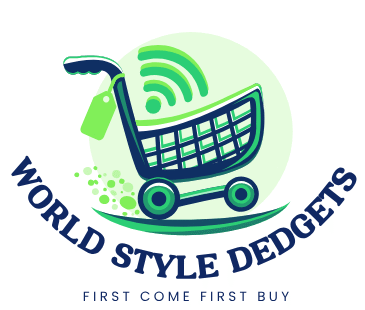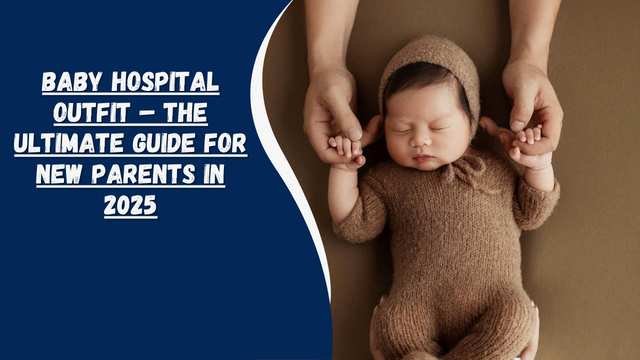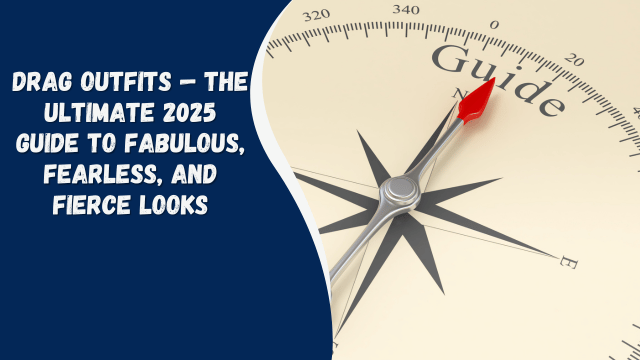Baby Girl Valentine’s Outfit – The Complete 2025 Guide to Dressing Your Little Valentine in Style
Meta Description:
Discover the most adorable and comfortable baby girl Valentine’s outfit ideas for 2025. From soft rompers to matching family sets, explore expert tips on how to choose, style, and photograph your little sweetheart’s perfect Valentine’s Day look.
Introduction: Love at First Outfit
Valentine’s Day isn’t just for grown-ups exchanging flowers and chocolates — it’s also a day to celebrate the purest form of love: the bond between parents and their baby. For parents of baby girls, this special occasion becomes even more magical with the perfect baby girl Valentine’s outfit.
From heart-patterned onesies to red-and-pink tutu dresses, Valentine’s outfits for baby girls blend warmth, comfort, and irresistibly cute designs. But choosing the right outfit isn’t only about style — it’s about comfort, safety, and creating lasting memories through adorable photos.
This detailed guide explores everything you need to know before buying or styling your baby girl’s Valentine’s Day outfit in 2025 — including fabric choices, seasonal styling tips, photo ideas, sustainable options, and expert parent recommendations.
What Is a Baby Girl Valentine’s Outfit?
A baby girl Valentine’s outfit is a themed clothing set designed to celebrate Valentine’s Day with cute symbols of love — like hearts, cupids, bows, and sweet messages (“Mommy’s Little Valentine,” “Love Bug,” or “Be Mine”).
These outfits typically include soft bodysuits, matching pants or tutus, accessories like headbands, and sometimes even themed socks or bibs. The goal is to make your baby both comfortable and picture-perfect for Valentine’s Day events, family photos, or just cozy cuddles at home.
Why a Valentine’s Outfit for Your Baby Girl Matters
You might wonder — does a newborn or infant really need a Valentine’s outfit? The answer is simple: it’s not just about dressing up; it’s about celebrating love, milestones, and memories. Here’s why it’s worth it:
💖 1. Create Heartwarming Memories
Those first Valentine’s Day pictures will become keepsakes you’ll treasure for a lifetime. A themed outfit makes them extra special.
🧸 2. Comfort with Cuteness
Modern Valentine’s outfits are made with premium fabrics — soft, safe, and perfect for sensitive baby skin.
📸 3. Perfect for Photos and Social Sharing
Whether it’s a casual home shoot or a professional photography session, a themed outfit adds a festive touch to every snapshot.
👨👩👧 4. Family Coordination
Matching “Mommy and Me” or “Daddy’s Valentine” outfits are trending in 2025, bringing families together in style.
Types of Baby Girl Valentine’s Outfits
Here’s a breakdown of popular outfit styles for baby girls this Valentine’s season — from casual to dressy:
1. Valentine’s Bodysuits and Onesies
The simplest and most comfortable option. Look for prints like hearts, “XOXO,” or love-themed quotes. Choose 100% cotton for softness.
2. Tutu Dresses
Perfect for photo sessions! These combine a soft cotton bodice with a layered tulle skirt — adorable yet breathable.
3. Two-Piece Sets
Often include a top or onesie with matching pants or leggings. Some even come with accessories like headbands or socks.
4. Rompers and Jumpsuits
Great for babies who move a lot — rompers are easy to put on and allow free movement.
5. Matching Family Sets
Coordinating looks for mom, dad, and baby are increasingly popular — think of a “Love Squad” or “Mini Valentine” theme.
6. Personalized Outfits
Custom embroidery with the baby’s name or birth date makes the outfit truly unique.
Fabric and Comfort: Choosing the Right Material
Your baby’s skin is sensitive — that’s why fabric quality matters most. When choosing a Valentine’s outfit, keep these fabric tips in mind:
| Fabric Type |
Best For |
Why It’s Great |
| Organic Cotton |
Everyday wear |
Hypoallergenic, soft, breathable |
| Bamboo Viscose |
Warmer climates |
Silky feel, eco-friendly, temperature-regulating |
| Fleece or Knitted Cotton |
Cooler months |
Provides warmth and comfort |
| Tulle (for skirts) |
Photoshoots |
Light and decorative — pair with a cotton lining |
Avoid itchy fabrics, sequins, or harsh embellishments that can irritate baby skin. Always check for baby-safe dyes and non-toxic prints.
How to Choose the Perfect Valentine’s Outfit in 2025
Choosing the ideal outfit involves more than picking something cute. Here are five expert tips:
🌹 1. Match the Weather
For warm climates, pick sleeveless rompers or cotton bodysuits. For cold areas, layer with leggings, a cardigan, or a cozy fleece onesie.
🎀 2. Consider the Occasion
-
At Home: Simple onesie or romper with a cute bib.
-
Photoshoot: Dress or tutu with coordinated accessories.
-
Family Outing: Layered outfit with jacket and socks.
📏 3. Get the Right Size
Babies grow fast! Choose an outfit one size up if your baby is close to the upper limit of her current size. Check brand sizing charts before purchasing.
🧷 4. Prioritize Easy Dressing
Look for snap buttons, side openings, and stretchable necklines for quick diaper changes.
🌍 5. Go Sustainable
Eco-friendly outfits made from organic cotton or bamboo are trending. They’re safe, soft, and kinder to the planet.
Top Trending Valentine’s Outfit Ideas (2025 Edition)
Here are some adorable ideas trending this year:
💘 1. “Mommy’s Little Valentine” Romper
A red cotton onesie with white lettering and heart graphics — perfect for first-time moms.
💕 2. Pink Heart Tutu Dress
Soft pastel pink top with a fluffy tulle skirt — a dreamy look for photo sessions.
💌 3. “Love Bug” Two-Piece Set
A red-and-black polka dot theme featuring a cute ladybug design — playful and fun.
❤️ 4. Matching Family Pajamas
Cozy Valentine’s sleepwear for parents and baby — perfect for family photos at home.
💓 5. Personalized “First Valentine’s Day” Outfit
Custom outfits with the baby’s name and date add sentimental value.
Styling Tips for Valentine’s Day Photos
If you’re planning a Valentine’s photoshoot for your baby girl, these expert styling tips will help you create picture-perfect memories:
-
Use Soft Lighting: Natural light works best for baby photography.
-
Stick to a Color Palette: Shades of red, pink, and white keep the theme cohesive.
-
Add Props: Heart balloons, plush toys, or flower petals make cute accessories.
-
Keep the Background Simple: Too much decoration distracts from your little star.
-
Include Parents or Siblings: Capture family love in coordinated outfits.
Where to Buy the Best Baby Girl Valentine’s Outfits (2025 Guide)
Here’s where parents can find adorable Valentine’s outfits this season:
🛒 Online Stores
-
Carter’s: Classic heart-themed onesies and dresses.
-
Baby Mori: Sustainable, minimalist designs.
-
Amazon Baby Store: Wide variety and quick delivery.
-
Etsy: Personalized and handmade options.
-
Target Baby Collection: Affordable and trendy sets.
-
H&M Baby: Stylish modern outfits with soft cotton fabrics.
🏬 Local Baby Boutiques
Boutiques often offer limited-edition Valentine’s pieces, embroidery services, and luxury fabrics for keepsake outfits.
Sustainability and Safety: The 2025 Standard for Baby Fashion
With growing awareness around sustainability, parents now prioritize eco-conscious fashion for their babies. When shopping, look for these certifications:
-
GOTS (Global Organic Textile Standard): Guarantees organic, chemical-free fabrics.
-
OEKO-TEX Standard 100: Ensures the outfit is safe from harmful substances.
-
Fair Trade Certified: Supports ethical labor practices.
Always ensure accessories like buttons, bows, and snaps are securely stitched and choking-hazard-free.
DIY Valentine’s Outfit Ideas (For Creative Parents)
If you love a personal touch, crafting your own outfit can be fun and meaningful.
💌 Simple DIY Ideas:
-
Decorate a plain cotton onesie with non-toxic fabric paint or iron-on heart patches.
-
Add a red or pink tulle skirt for an instant tutu.
-
Use a baby-safe headband with soft felt hearts.
-
Create a “Love Bug” theme with black dots and wings sewn on gently.
DIY outfits are not just creative — they’re cost-effective and filled with love.
Real Parent Stories: First Valentine’s Magic
“My daughter’s first Valentine’s outfit was a red onesie that said ‘Daddy’s Valentine.’ My husband still keeps that tiny outfit as a keepsake.”
— Amira, Dubai
“We did a mini home photoshoot with our twins in matching pink tutu dresses. Those pictures are still my favorite!”
— Sophia, London
“I bought a personalized outfit from Etsy that said ‘My First Valentine’s Day – 2025’. It’s now framed in her nursery.”
— Fatima, Pakistan
Each story reminds us that these small gestures of love become priceless family memories.
How to Care for Your Baby’s Valentine’s Outfit
To keep your baby girl’s Valentine’s outfit soft, clean, and safe:
-
Prewash Before Use: Use a fragrance-free baby detergent.
-
Avoid Fabric Softeners: They can irritate sensitive skin.
-
Air Dry if Possible: Keeps fabrics soft and durable.
-
Iron on Low Heat: Especially for cotton outfits with prints.
-
Store Properly: Keep it in a labeled keepsake box after the occasion.
Common Mistakes to Avoid
-
❌ Buying too small a size — always allow for growth.
-
❌ Overdressing — babies can overheat easily.
-
❌ Choosing scratchy or glittery fabrics.
-
❌ Forgetting practicality — diapers changes should be easy!
-
❌ Waiting till the last minute — Valentine’s outfits sell out early.
Why a Baby Girl Valentine’s Outfit Becomes a Treasured Keepsake
Years from now, your baby girl won’t remember her first Valentine’s Day — but you will. That little outfit, soft and tiny, becomes a time capsule of her first year, representing love in its purest form.
Frame it with her photo, keep it in a memory box, or pass it down to future generations. It’s more than clothing — it’s a story woven in fabric.
FAQs About Baby Girl Valentine’s Outfits
1. What size should I buy for my baby’s Valentine’s outfit?
Always check the brand’s sizing guide. If your baby is between sizes, go one size up for comfort.
2. Can I use a regular onesie and decorate it myself?
Yes! DIY Valentine’s outfits are fun, affordable, and sentimental — just use baby-safe materials.
3. Are tulle skirts safe for newborns?
Yes, if the tulle is soft and lined with cotton underneath. Avoid rough or scratchy layers.
4. What colors are best for Valentine’s photos?
Classic reds and pinks work well, but modern palettes include blush, cream, and dusty rose.
5. Can boys wear Valentine’s outfits too?
Absolutely! Valentine’s outfits come in styles for all babies — love knows no gender.
Conclusion: Dress Your Little Valentine with Love
Your baby girl’s first Valentine’s outfit isn’t just about fashion — it’s about celebration, emotion, and connection. It symbolizes the unconditional love that fills your home and heart.
When you choose a Valentine’s outfit thoughtfully — with comfort, care, and creativity — you’re not just dressing your baby. You’re crafting a memory that will live on in photos, keepsakes, and stories for years to come.




